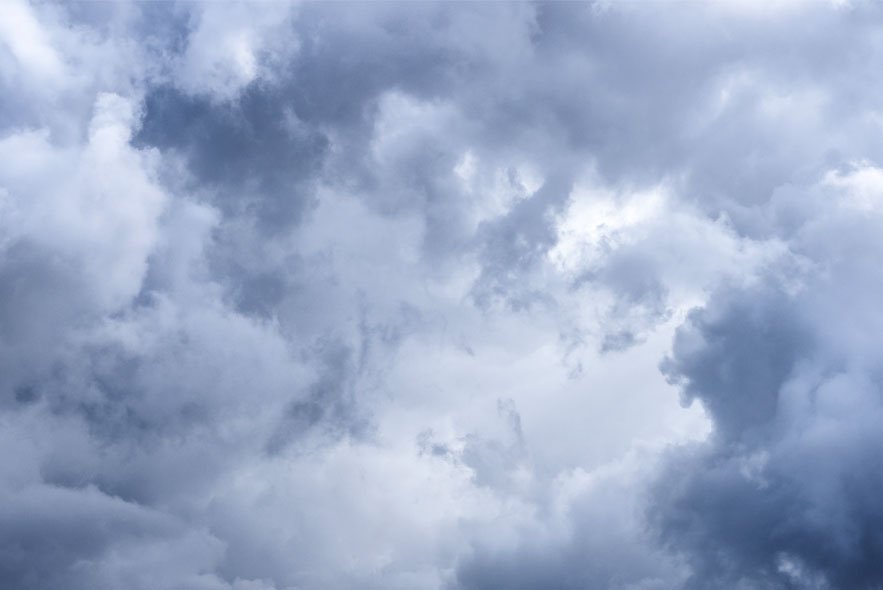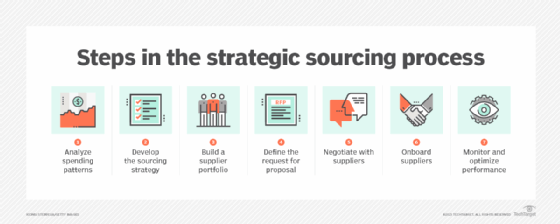
strategic sourcing
What is strategic sourcing and how does it work?
Strategic sourcing is an approach to supply chain management that formalizes the way information is gathered and used. It lets an organization consolidate its purchasing power to find the best possible values in the marketplace and align its purchasing strategy to business goals.
Strategic sourcing has become a more common strategy with the rise of digital supply chains. It requires analysis of what an organization buys, from whom, at what price and at what volume. Strategic sourcing differs from conventional purchasing because it places emphasis beyond initial purchase price to focus on total cost of ownership and optimizing the sourcing process through ongoing market research and building relationships with suppliers.
Businesses use strategic sourcing to make their procurement processes less shortsighted and less focused on price. With a sourcing plan, they can develop an adaptable system that contributes to the overall long-term value of the business.
The process begins with analyzing business needs and historical spending. The next step is to outline a strategic plan, and then collect data and conduct market analysis that guides decision-making on supplier selection.
This article is part of
Guide to supply chain management
Once suppliers are selected, contract negotiations take place with each supplier to determine specific terms of the relationship. Strategic sourcing also involves measuring performance and improving the process on a continual basis. Large organizations usually include many suppliers in their strategic sourcing activities. Organizations that wish to delegate the sourcing decision function to a specialist can turn to outsourcing providers.

7 strategic sourcing process steps
The strategic sourcing process has many variations, but it's commonly broken into seven steps popularized by consulting firm Kearney. A typical step-by-step strategic sourcing process includes the following:
- Product categories. Analyze product categories the business uses, as well as its spending patterns, and the processes and departments involved.
- Sourcing strategy. Develop a sourcing strategy based on business goals.
- Supplier portfolio. Assess the supplier market and create a portfolio of potential suppliers.
- Requests for proposal (RFPs). Define RFP criteria and templates.
- Final supplier list. Negotiate with and create a final roster of suppliers.
- Onboard new suppliers. Integrate new vendors and outsourcing providers into existing processes.
- Optimize the process. Track performance metrics and optimize the sourcing plan and workflows, as needed.
Benefits of strategic sourcing
The benefits of rethinking sourcing processes and initiatives can be far-reaching. As businesses take advantage of the vast amounts of available data and digitization of business processes, procurement is an area ripe for transformation. The following are some of the competitive advantages of pursuing a strategic sourcing strategy:
- Transformed sourcing. Strategic sourcing can transform a process focused merely on cost savings to one that maximizes value. It is especially good for optimizing long-term decision-making and maintaining good relationships with suppliers.
- Increased productivity. This approach automates rote purchasing activities so that humans can focus on more productive tasks. It also relies on data and analytics to streamline decision-making and other processes.
- Cost savings. Strategic sourcing requires data and market analyses that pinpoint the best suppliers and negotiations for a particular business's needs, thus leading to cost savings.
- Visibility into potential risk factors. An in-depth understanding of supplier markets can help identify risks and enable businesses to develop sourcing plans to improve risk management and mitigate risk.
- Increased flexibility. Continued improvement and sustainability of supply chains lets businesses adapt to external factors and changes.
- Strong supplier relationships. Strategic sourcing leads to close and long-term relationships with suppliers and outsourcers.
- Supply chain efficiency. Careful analyses will pinpoint useful improvements to streamline supply chain processes.
- Improved demand forecasting. These analyses can lead to more accurate demand forecasting and the visibility needed to ensure continuous improvement and meet customer demand in the future.
Strategic sourcing examples
A strategic sourcing plan helps businesses achieve several goals. Examples of these include the following:
- Managing environmental conditions and logistics. This approach involves sourcing crops or goods in locations where they're readily available or that have easy access to transportation. It also requires using logistics capabilities to get them where they need to be.
- Obtaining competitive differentiation. This is a strategy where businesses use suppliers with desired brand images and emphasize them through marketing, such as when laptop manufacturers use the Intel Inside logo.
- Meeting compliance and regulatory guidelines. This is best done by choosing certified components.
- Supporting business sustainability. Organizations increase business sustainability through the use of fair trade and other sustainably grown or manufactured goods.
- Mitigating geopolitical instability. This involves diversifying supplier locations and creating contingency plans for suppliers in volatile areas.
- Minimizing risk. Businesses identify secondary and alternative suppliers, and closely monitor changes in factors such as product availability, quality, shipping, taxes, exchange rates and regulations.
Strategic sourcing vs. procurement
Strategic sourcing and procurement differ in scope and in their overall goals.
Procurement
Procurement refers to the activities and procedures necessary for businesses to acquire products and services. While this technically involves both strategic and administrative responsibilities, procurement departments often focus on the day-to-day transactions and processes involved in e-procurement, such as purchase orders, invoicing and payments.
A company's procurement department is typically headed by a chief procurement officer. Procurement professionals oversee purchases and ensure they align with company goals, as well as other factors such as profit margins and cost reduction.
Strategic sourcing
In contrast, strategic sourcing emphasizes the activities leading up to an actual purchase, including analyzing business needs and the marketplace at large. While a procurement strategy generally looks for the lowest-priced option, strategic sourcing looks at the big picture, employing large data sets to evaluate the value of other factors, such as optimal vendor relationships and reduced risk to the business.

Strategic sourcing software
Strategic sourcing software is used to standardize sourcing requirements and provide a platform for collecting information about supplier performance, products, markets and business needs. This software is sometimes part of a larger procurement system, procure-to-pay platform, enterprise resource planning system or supply chain management system.
Products that are labeled "strategic sourcing application suites" are growing in popularity, however. These typically include functionality -- and often have separate software modules -- for e-sourcing, spend analysis, contract management, warehouse management and supplier relationship management. Some vendors in this market, according to Gartner, include Coupa, GEP, Ivalua, Jaggaer, SAP, Workday and Zycus.
Nascent artificial intelligence (AI) technologies are making the sourcing process more effective. For example, businesses are using natural language processing tools to analyze contracts with suppliers for potential risks, and using predictive analytics tools to predict future market trends based on factors such as market conditions, time of year and geopolitical situations. AI technology is also able to recommend which suppliers are best to work with based on their past performances, current metrics and a customer's needs.
Finally, the integration of blockchain into the supply chain is increasing visibility and accuracy. For example, a blockchain platform can record a series of transactions that occur during procurement and throughout a supply chain to enable a business and other stakeholders to track the flow of goods and purchases.
Sustainable procurement is a new trend affecting procurement strategy and process. Find out what sustainable procurement is and how it's influencing IT buying.





